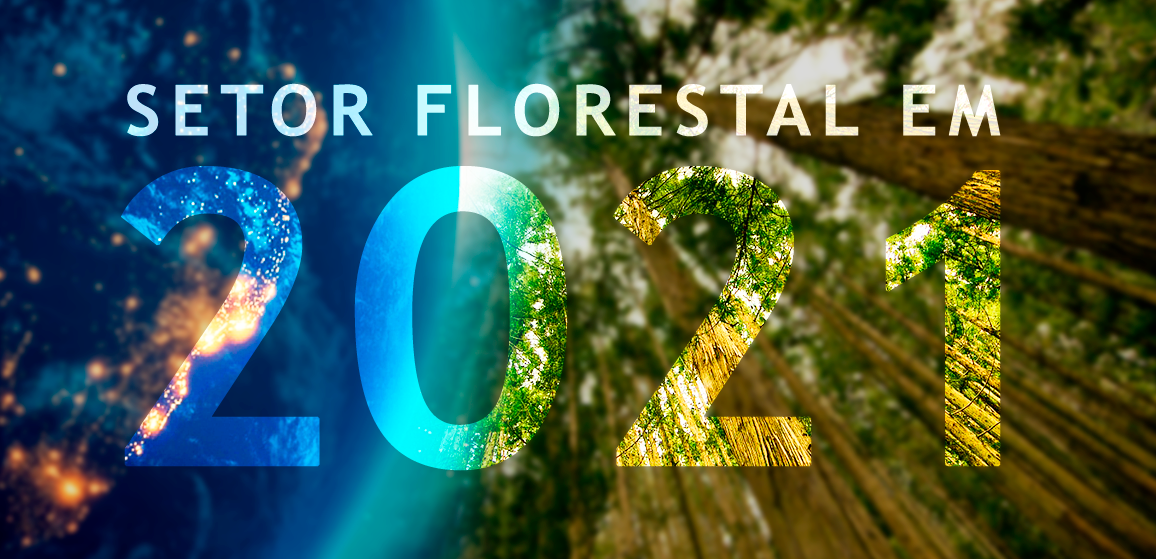When the scheduled day came to sit in the chair and prepare this traditional article, the only one we allow ourselves to write in the first person, we were at least afraid, because after all, after everything we’ve been through in 2020, trying to predict anything that might happen in 2021 is a challenging exercise! However, when reviewing each of the 10 forecasts we wrote for last year, we realized that even in a completely atypical year, where the global economy suffered a setback that the most pessimistic market analyst could have predicted, we came very close to getting most right. from them!
In this way, we changed the format of the forecasts for 2021 a little. In this article, we review the forecasts made for 2020, commenting on our successes and mistakes, and highlight what should happen in 2021.
What will the business climate in the world look like after the pandemic?
At the end of 2019, we wrote that the prospect of global economic recession, sown throughout that year, would decrease significantly in 2020, with the signal of a possible trade agreement between the United States and China and changes in fiscal and monetary policies of important countries.
Of course, we had no idea that in 2020 the global economy would not be governed by bilateral conflicts, but we would all be in the same boat, fighting a common enemy. Unfortunately, we messed up here…
According to the International Monetary Fund (IMF), the global economy shrank 4.4% in the year 2020. As a comparison, in 2009, when the world faced a financial crisis for the last time and the economy contracted only 0.1%. Many economists predict that it will take at least a year for labor markets to return to something akin to the pre-pandemic era. Considering that the current scenario of the pandemic is expected to extend well into 2021, we will have an arduous year of reconstruction and economic recovery. Growth? Only in 2023.
What about the Brazilian economy? We made a big mistake in our predictions, but who didn’t?
We had highlighted last year that the expectation of Brazilian economic growth for 2020 was 2.30%. This projection, by the Central Bank, was endorsed by large banks and private financial institutions.
However… (I don’t need to repeat here what everyone knows happened).
Greater damage from the pandemic in the Brazilian economy was, in a way, avoided by stimulating consumption and helping companies, given the injection of more than 600 billion reais by the government. However, this measure caused an explosion in the Brazilian public debt, causing 2020 to have registered the worst deficit in the country’s history.
The uncertain scenario also reflected in a lower volume of investments and difficulty in implementing the privatization agenda promised by the government. 2020 should present a significant drop in the Gross Domestic Product (GDP), according to different projections, of at least 5%.
Foreign investments: unfortunately, we maintain our pragmatism.
Last year we highlighted that, due to international discussions regarding deforestation and burning in the Amazon, we would hardly see the rules that restrict the acquisition of land by foreign companies in Brazil being relaxed.
This year, we unfortunately maintain our pragmatic opinion. As absurd as the restriction is (still under the aegis of a 1971 law) and as much as we hope for this change that would bring a large volume of investments to the forest sector, it will not happen in 2021.
Even though Bill 2,963 of 2019 was approved by the Senate, it still lacks the approval of the Senate Chamber and presidential sanction. And, as we have already highlighted last year, the president of the republic is not expected to enact the law. The president himself stated in an interview given in the last days of the year that if the Chamber approves, he will veto it, as “we lack patriotism and we cannot allow Brazil to be bought”…
And national investments?
The last reduction in the basic interest rate (SELIC) took place in August 2020 and reduced it to 2.0%. As we highlighted a year ago, this drop reduces the interest of investments in fixed income funds such as CDB, LCA (Letra de Crédito Agrícola), LCI (Letter of Credit for Real Estate) and makes investors look for long-term investment alternatives, low risk, such as forests.
During 2020 we saw a reasonable movement of national funds in the forest sector (naturally lower movement than expected due to the pandemic). In 2021, as the economy recovers and given the very low interest rate, investment in forests will continue to be a good option for capital remuneration.
Don’t be surprised to see new national players looking for forests as forms of investment…
And about the recovery of cellulose, are we right?
With a slow pace of global economic growth, we expected that by the end of the first half of 2020 we would achieve greater balance and
between supply and demand and we would start to recover pulp prices. We hit the nail on the head!
With the decrease in supply and a lot of commercial effort, prices reacted very well and made 2020 an excellent year for the pulp market. Obviously, maybe this text would be completely different if we didn’t have the exchange rate hike, which greatly favored the segment.
In 2020 we talk about the energy market in this item. Now let’s talk about something else…
For several consecutive years we have been expecting a significant expansion of the biomass energy market in the country. In 2020, it was no different: we expected that energy from forest biomass would gain much greater importance, which did not happen (even due to the crisis that hit the country).
So for 2021, we will use this space to talk about another subject that has been gaining momentum and should occupy a good part of the discussions in the forest sector in 2021: carbon.
Since the creation of the carbon credit market, about two decades ago, discussions related to forest carbon have been focused mainly on native forests, however, throughout 2020 the interest of investors in planted forests and forest-based companies in relation to theme was great.
A growing demand for carbon credits is expected and forests can meet this demand, as long as the rules (to be discussed at COP-26 in November 2021) are defined.
In addition, the growing concern of companies and the market with ESG (Environmental, Social and Governance) practices drives the issue, after all, nothing better than earning money and contributing to the main environmental problem of the century, right?
Civil construction remains an important customer for the sector
We predicted that construction would have a great year in 2020, after 5 years of recession. It is always important to highlight that civil construction is an important segment for the forest-based sector.
We didn’t hit the nail, but we stayed far from missing. The real estate market was also affected by the pandemic, but the impact was a drop of only 2.2% in sales volume between the first half of 2019 and the same period in 2020. The postponed launches are expected to resume until the end from the first half of 2021, as there is great optimism on the part of businessmen in the sector regarding the resumption of growth, if the rise in construction materials (including wood) is not prohibitive for the sector.
In the United States, an important consumer of Brazilian forest-based products, after suffering a significant impact during the first semester (as a result of what we all already know….) the construction market reacted strongly in the second semester, demanding a lot of inputs from the sector forestry.
The phenomenon of home renovations, both in Brazil and in the US, was another factor that greatly impacted the market for forest-based inputs, since during isolation people started to pay more attention to their homes, investing in expansions, renovations. , etc.
In 2020 we were right to say that the war for raw materials in the pine market would be fiercer than in 2019. We were right? It is like!
Never before in our history have we seen so much concern about the (lack of) forestry raw material in the pine market, as in 2020. And we have never done so many studies and market analyzes to try to show our customers creative alternatives to find a “blue sea” in this battle.
The lack of raw materials can easily be explained by the Law of Demand and Supply, or even more simply by mathematics: five minus seven is minus two! And today we are seeing this “minus two” ever closer, in the pine market.
The consequence of this phenomenon is obvious: greater competition, higher log prices, higher production costs, higher prices for the final product. As in recent years no one has been planting pine on a large scale and as no major wood consumer has closed its doors, in 2021 we will have even more war for raw material, with companies going further and further to obtain it.
Forget about cluster wood availability analysis. There are no more clusters due to the movement of large companies in the market!
As for new pulp projects, we were right to say that we would not have any big news in 2020. And in 2021?
The big news in the Brazilian pulp sector that is expected for 2021 is the conclusion of the arbitration process involving Paper Excelence and the JBS Group, for the Eldorado Celulose dispute and a probable announcement of expansion by the group that wins the litigation.
Other than that, we shouldn’t have new projects announced, even because there are already a greater number of projects announced than the market can absorb. In this sense, it is necessary to contain expectations, because among the advertisements out there, we have to separate the wheat from the chaff: there are projects based on the availability of forestry raw materials and
clear financial perspectives to get the industry back on its feet and, on the other hand, there are projects whose financial structure and supply sustainability are mysterious to any forest market analyst.
Timber prices will continue to rise and the Index Group will continue to grow
Wood prices, in general, will maintain an upward trend in several markets, both in pine (in all its states) and in eucalyptus (especially São Paulo), due to market balance.
Although 2020 was a tragic year for society as a whole, the forest-based sector held up well and the Index Group was a reflection of this, as we had the best year in our history! In 2021 we believe the market will be equally busy and we expect to grow our operations by at least 50%!
Just as we predicted for 2020, in 2021 forest-based industries will have to understand the wood production chain even better, through the use of intelligence.
Grupo Index, through Forest2Market do Brasil, provides monthly access to SilvaStat360 to dozens of customers, the only online timber pricing platform based on real transactions collected from company to company. In addition, we develop customized studies of supply and demand, price forecasts, website analysis, asset valuations, in short, all the products necessary for our clients to have a complete understanding of the market.
Don’t forget to share this article and let us know what you think in the comments and on our social networks!

